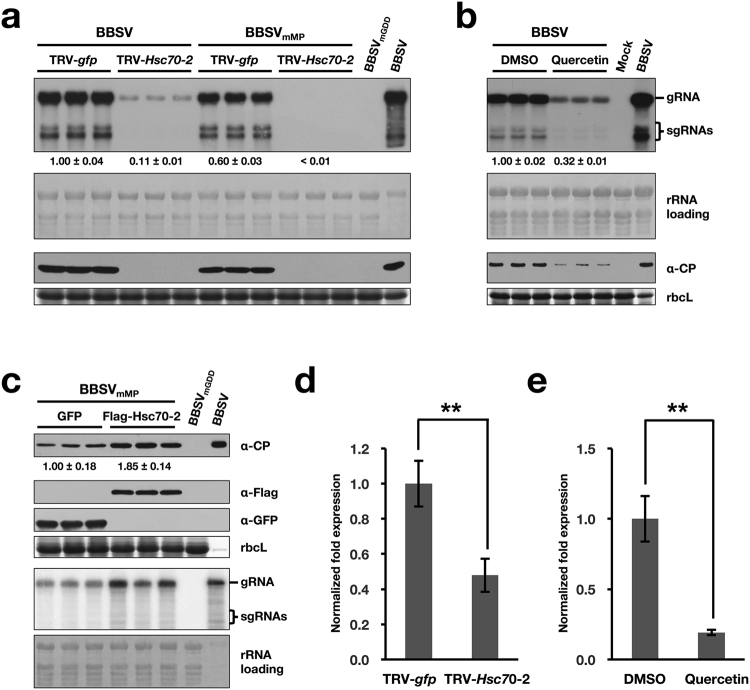Figure 5.
Hsc70-2 is essential for efficient accumulation of BBSV in N. benthamiana (a) Silencing of Hsc70-2 or Hsp70 expression in N. benthamiana impairs BBSV replication. At 7 dpi, the systemically silenced leaves from TRV-Hsc70-2-inoculated plants, or that from TRV-gfp-inoculated control plants were agroinfiltrated with wild-type BBSV or the movement-deficient BBSV mutant, BBSVmMP. Samples from the inoculated leaves were collected at 3 dpi for Northern blot (upper two panels) and Western blot (lower two panels) analyses. (b) Analysis of the BBSV accumulation in DMSO- and quercetin-treated N. benthamiana leaves. (c) Analysis of the BBSVmMP accumulation in leaves transiently expressing GFP or Flag-Hsc70-2. Bands corresponding to gRNA and sgRNAs as well as the antibodies used for Western blot analysis in figures a, b, and c are indicated on the right. The mock-inoculated or the replication-deficient mutant, BBSVmGDD served as the negative controls, N. benthamiana leaves systemically infected with BBSV served as a positive control (BBSV). Methylene blue-stained rRNAs and CBB-stained rbcL were used as RNA and protein loading controls, respectively. Numbers below blots represent relative abundance of mRNA or proteins in each treatment group normalized to that of the GFP group (n = 3 per group). (d) RT-qPCR was performed to confirm the silencing of Hsc70-2 in TRV-Hsc70-2-inoculated N. benthamiana plants (n = 6 per treatment). (e) RT-qPCR was performed to confirm the downregulation of Hsc70-2 expression in quercetin-treated N. benthamiana leaves (n = 3 per treatment). Error bars represent standard error (s.e.m.) of the means. Asterisks indicate statistically significant difference between the indicated groups (Student’s t-test, **P < 0.01).

